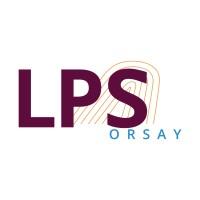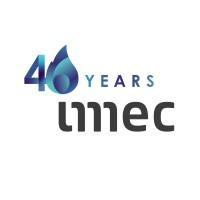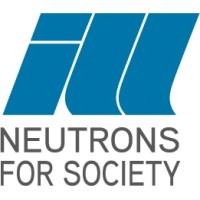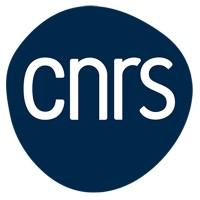Laboratoire de Physique des Solides (LPS)
Created in 1959

- BETA

Trend leader (A+)
Existing signals make this entity one of the most dynamic startups Social networks
1,305Activities
Entity types
Location
510, 510 Rue André Rivière, 91400 Orsay, France
Orsay
France
Employees
Scale: 51-200
Estimated: 42
SIREN
794750075Engaged corporates
11
1 4Added in Motherbase
1 year ago
Value proposition
[Automatic translation follows] Joint research unit of the University of Paris-Saclay and the CNRS
The Solid State Physics Laboratory is a joint research unit (UMR 8502) of the University of Paris-Saclay and the CNRS.
It brings together around a hundred researchers and teacher-researchers, experimentalists and theoreticians, and the research activity is supported by around sixty engineers, technicians and administrative staff.
Each year, the laboratory welcomes a large number of undergraduate and graduate students, including many doctoral students, as well as postdoctoral researchers and visiting scientists. The laboratory covers a wider variety of subjects than its name suggests, and aims to address the full diversity of condensed matter physics. The research activity is organized around three main axes, each involving approximately the same number of scientists:
- New electronic states of matter
- Physical phenomena with reduced dimensions
- Soft matter and the physics-biology interface
The first axis groups together both experimental and theoretical studies relating to the properties of systems in which electronic correlations are generally strong and which are the sites of remarkable properties and unconventional electronic states such as superconductivity, magnetism, metal-insulator transitions, etc.
The second axis includes activities relating to "nanoscience" in the broad sense. They are approached here from the point of view of fundamental properties, when the dimensions of an object become as small as certain characteristic distances (coherence length, mean free path, etc.).
The third axis extends the concept of "soft matter" to biological systems. The themes range from complex systems to living tissues, from liquid crystals to foams, including polymers and granular systems. These physical studies are at the interface with physical chemistry and biology.
Physics and Solid MatterOriginal language
Unité mixte de recherche de l’Université Paris-Saclay et du CNRS
Le Laboratoire de Physique des Solides est une unité mixte de recherche (UMR 8502) de l’Université Paris-Saclay et du CNRS.
Il regroupe une centaine de chercheurs et enseignants-chercheurs, expérimentateurs et théoriciens, et l’activité de recherche est soutenue par une soixantaine d’ingénieurs, techniciens et administratifs.
Le laboratoire accueille chaque année un grand nombre d’étudiants de premier et deuxième cycle dont de nombreux doctorants, ainsi que des chercheurs en postdoctorat et des scientifiques invités. Le laboratoire couvre une plus grande variété de sujets que son nom ne le suggère, et vise à aborder toute la diversité de la physique de la matière condensée. L’activité de recherche s’organise autour de trois grands axes, qui impliquent chacun à peu près le même nombre de scientifiques :
- Nouveaux états électroniques de la matière
- Phénomènes physiques aux dimensions réduites
- Matière molle et interface physique-biologie
Dans le premier axe sont regroupées des études tant expérimentales que théoriques ayant trait aux propriétés des systèmes dans lesquels les corrélations électroniques sont généralement fortes et qui sont sièges de propriétés remarquables et d’états électroniques non conventionnels tels que la supraconductivité, le magnétisme, les transitions métal-isolant ect.
Dans le deuxième se retrouvent les activités relevant des « nanosciences » au sens large. Elles sont ici abordées du point de vue des propriétés fondamentales, lorsque les dimensions d’un objet deviennent aussi petites que certaines distances caractéristiques (longueur de cohérence, libre parcours moyen, ...).
Le troisième axe, étend le concept de « matière molle » à des systèmes biologiques. Les thèmes vont donc des systèmes complexes aux tissus vivants, des cristaux liquides aux mousses, en passant par les polymères ou les systèmes granulaires. Ces études physiques sont à l’interface avec la physico-chimie et la biologie.
Physics and Solid Matter
Laboratoire de physique des Solides
https://www.lps.u-psud.fr/

| Corporate | Type | Tweets | Articles | |
|---|---|---|---|---|
 Michelin Tyre manufacturing, Motor Vehicle Manufacturing | Michelin Tyre manufacturing, Motor Vehicle Manufacturing | Other 22 Oct 2024 | | |
 L'Oréal Cosmetics, Personal Care Product Manufacturing | L'Oréal Cosmetics, Personal Care Product Manufacturing | Other 22 Oct 2024 | | |
 Safran Defence and Aerospace, Aviation and Aerospace Component Manufacturing | Safran Defence and Aerospace, Aviation and Aerospace Component Manufacturing | Other 22 Oct 2024 | | |
 Dia & Co Semiconductors, Retail Apparel and Fashion | Dia & Co Semiconductors, Retail Apparel and Fashion | Other 30 May 2024 | | |
 Air Liquide Chemistry, Chemical Manufacturing | Air Liquide Chemistry, Chemical Manufacturing | Other 13 Jun 2024 | | |
 imec Research Services | imec Research Services | Other 29 Feb 2024 | | |
 ILL - Institut Laue Langevin Research, Research Services | ILL - Institut Laue Langevin Research, Research Services | Other 10 Apr 2024 | | |
 CNRS Research, Research Services | CNRS Research, Research Services | Other 4 Dec 2024 | | |
 ESRF - The European Synchrotron Research, Research Services | ESRF - The European Synchrotron Research, Research Services | Other 8 Mar 2024 | | |
 CEA Research | CEA Research | Other 3 Dec 2024 | | |